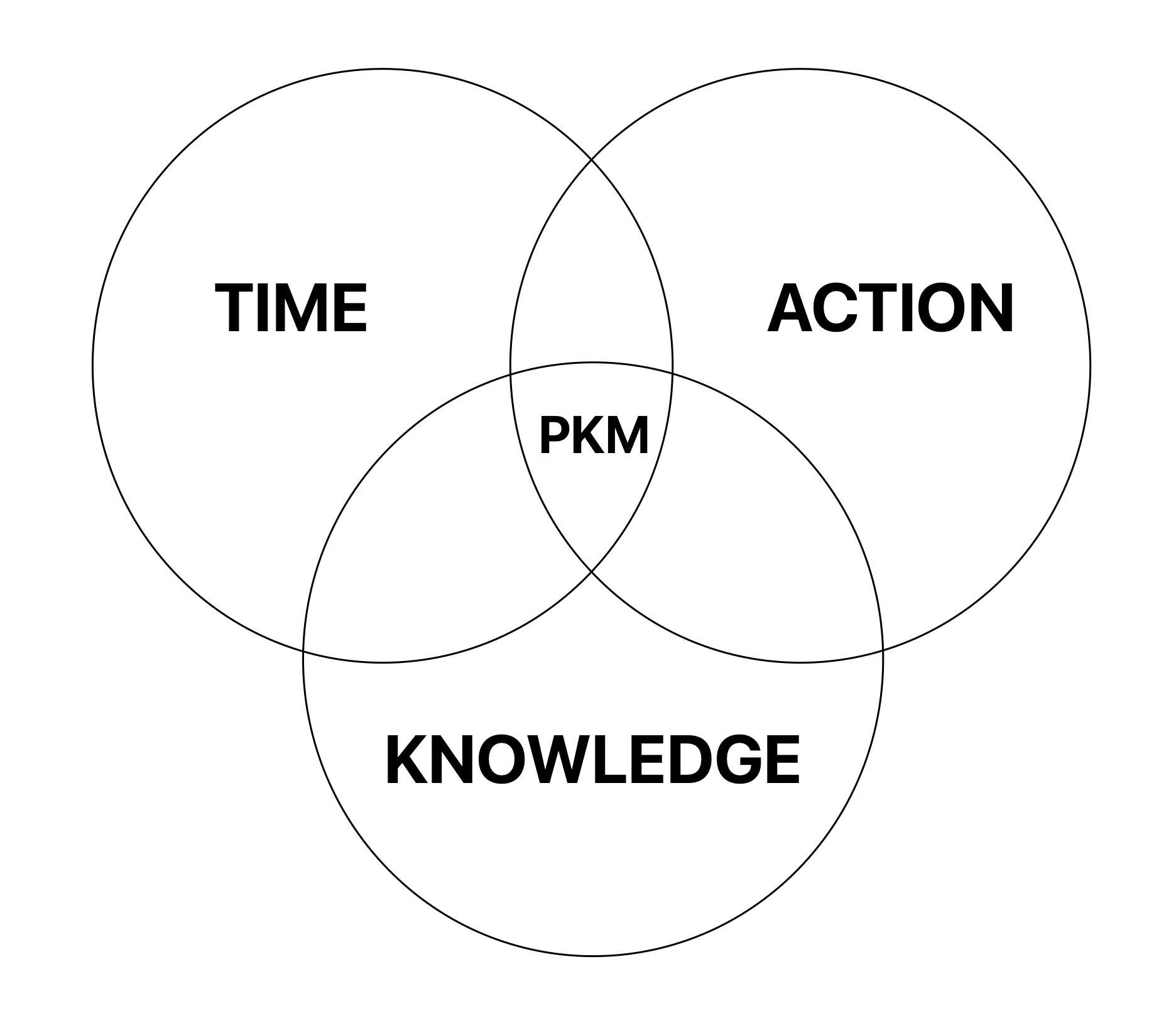Personal Knowledge Management (PKM) can help you effectively manage and utilize your knowledge. It consists of three key headspaces, each serving a different purpose:
- Knowledge-Based: This space is about learning more by discovering new information, and conducting research.
- Time-Based: This section is all about improving our ability to concentrate. It means organizing our time well, deciding what's most important, and getting rid of things that distract us.
- Action-Based: This headspace focuses on taking action and applying what we have learned by trying things out. By taking action, we can turn knowledge into real results and have a meaningful impact in our personal and professional lives.
- You use your knowledge to gain a better understanding of the world.
- You allocate your time according to the priorities that matter most to you and the world.
- You take action to make a positive impact in the world.
KNOWLEDGE
- Book Notes
- Course Notes
- Articles Saved
- Youtube Videos Worth Referencing for later
- Podcasts
- Quotes
- Etc.
TIME
- Your Notebook serves as the container for each day. These daily notes are sorted by day and can be used to insert ideas, inspiration, or meeting notes.
- Your Areas of Life
- Planning Today's priorities
- Planning This Week's priorities
- Planning This Month's priorities
- Your Individual Guiding Principles
- Time is where you can journal or reflect about the past.
- Time is where you can plan and vision dump about the future.
ACTION
Using what you've created in the Knowledge and Time areas to inform your:
- Task List
- Project List
- Goals List
To create a personal knowledge management (PKM) system that you will actually use, it is important to keep these three key aspects in mind and design a workflow that seamlessly transitions between them.
Hunter
